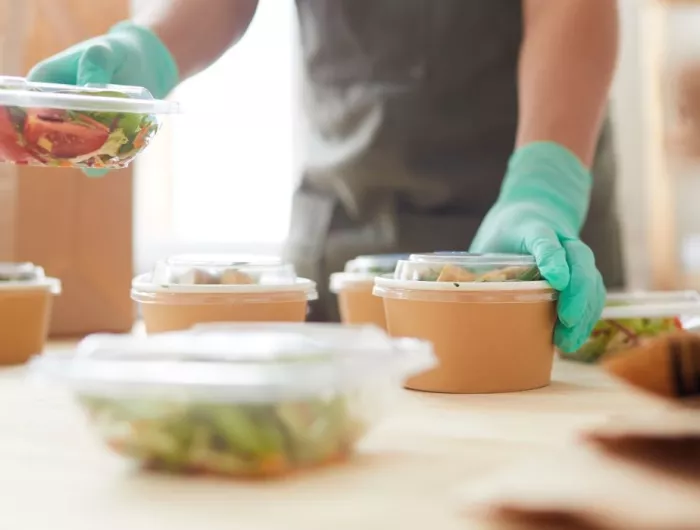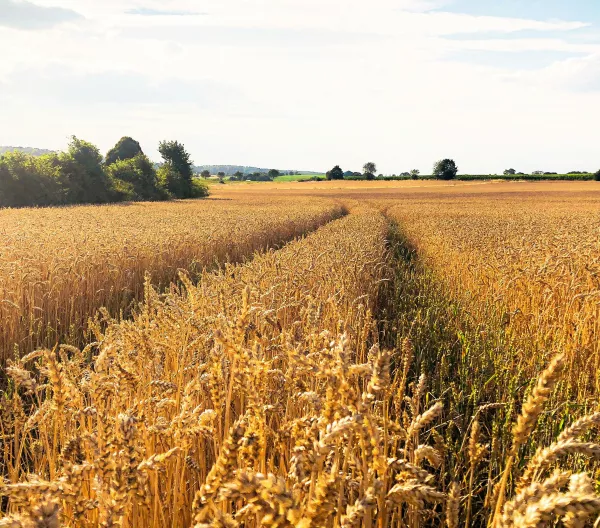Government food purchasing and service: Implementing best practices

Seventyfour - stock.adobe.com.
The resources in this section support implementation of various aspects of values-aligned food purchasing and service (e.g., vendor solicitations, food waste reduction, cost management) at the institutional level. This section is most applicable to government and institutional food procurement and food service practitioners.
Best practices
- Sample Solicitation Language for Cafeteria and Food Services (n.d.) | U.S. General Services Administration Public Building Service: The U.S. General Services Administration created several resources to support federal procurement officials in incorporating health and sustainability considerations into solicitations for food services in federal facilities. Please note these resources refer to the 2011 Health and Sustainability Guidelines for Federal Concessions and Vending Operations, which have been replaced by the 2017 Food Service Guidelines for Federal Facilities.
- Solicitations Toolkit (2022) | Center for Good Food Purchasing: This toolkit was developed to empower institutions to use solicitation documents and strategies to further the goal of creating a transparent and equitable food system that supports the health of people, animals, and the planet. It is designed for institutional food procurement specialists who have already committed to using solicitations to increase their values-based food procurement, and particularly for institutions enrolled in the GFPP. The toolkit offers a variety of customizable solicitation language and tools as well as examples from real institutions participating in the GFPP.
- Advancing School Food Procurement: Driving Values-Based Purchasing through Competitive Solicitations (2022) | The Common Market: This resource is intended to inspire and support schools interested in shifting toward or growing opportunities for values-based procurement through expert key findings, tangible tips, case studies, and real-world competitive solicitations and contract examples. Many of the recommendations and language are applicable to non-K-12 institutions as well.
- Setting the Table for Success: A Toolkit for Increasing Local Food Purchasing by Institutional Food Service Management (n.d.) | Farm to Institution New England: This toolkit was designed to help institutional staff understand the process to request proposals from and negotiate contracts with food service management companies in order to maximize opportunities to incorporate regional food. These tools are also applicable to: self-operated facilities for use in setting internal goals and contracting with group purchasing organizations or directly with suppliers, values-aligned procurement efforts that encompass more than local economies, and stakeholders outside of New England.
- A Roadmap for Regional Good Food Purchasing (2023) | SPUR, Center for Good Food Purchasing: The San Francisco Bay Area Local Food Purchasing Collaborative is a partnership of 12 institutions that together spend more than $40 million annually on food. SPUR worked with the collaborative to prepare this roadmap and toolkit of resources to assist policymakers, implementers, and advocates interested in approaching values-based procurement as a region. It charts a vision forward for the Bay Area and can serve as a model for other regions. The State of Good Food Purchasing in 2022 report provides additional context.
- Organic School Food Roadmap (2021) | Friends of the Earth: This resource is a practical “how-to” guide, developed to help California school food service teams make organic purchasing decisions and overcome key challenges when buying organic foods. The insights captured from school districts’ experience are applicable to other institutional sectors as well.
- Vendors Training Guide Tool (2020) | Association of State Public Health Nutritionists: This resource helps public health professionals communicate and work with vendors who are blind. Blind vendors are given preference to operate vending and concessions on government property under the Randolph-Shepard Act. The tool includes information on marketing trends, barriers, beneficial training topics, steps for implementation, and more.
- Good Food Purchasing Program Vendor Resources (n.d.) | Center for Good Food Purchasing: This document guides vendors through four steps to collaborate with institutional clients enrolled in the GFPP: get oriented to the program, review priority items within your current offerings, use our purchase browser to start buying more Good Food, and learn more about Good Food certifications.
- Beyond Nutrition: A Landscape Analysis of Values-Based Procurement Among Food Service Management Companies (2019) | Center for a Livable Future: This landscape analysis assessed commitments to values-based procurement among the top 50 contract food service management companies. The author identified trends and recommendations that may inform institutions’ approach to engaging with these companies.
- Food Waste Solutions (n.d.) | Practice Greenhealth: This resource guides institutions through each food waste reduction strategy in the U.S. Environmental Protection Agency food recovery hierarchy from source reduction to food donation to recycling and will help make a plan for achieving waste reduction goals. The primary audience is healthcare institutions but the guidance is broadly applicable to other institutional food service operations.
- Sustainable Eating: Pulling the Levers in Food Service (2024) | World Wildlife Fund, Sodexo: This report identifies the most impactful actions that contracted food service providers can take to deliver the planning, production, and uptake of more sustainable meals.
- Playbook for Guiding Diners Toward Plant-Rich Dishes in Food Service (2020) | World Resources Institute: This playbook outlines effective behavior change strategies that food service companies can use to serve up sustainable food options diners will want to buy. These strategies are based on up-to-date evidence from behavioral science research combined with expert input from the food service industry.
- Greener by Default Resource Guide (n.d.) | Greener by Default: A Greener by Default menu features plant-based meals as the default, while giving diners the choice to opt into meat and/or dairy. This resource guide presents the evidence for going Greener by Default and explains how to implement the concept in any dining setting.
- Plant-Forward Future (n.d.) | Practice Greenhealth: This is the landing page of a set of curated resources from Practice Greenhealth, Health Care Without Harm, and partners that will help health care facilities set a plant-forward goal, menu, and market plant-forward dishes, and track their progress. The three main subpages include a high-level how-to guide, the case for plant-forward from the viewpoint of different stakeholders, and an extensive library of additional resources to support implementation, marketing, and tracking.
- Dietary Guidelines for Americans and Older Adults: Toolkit for Senior Nutrition Programs (2023) | Administration for Community Living, U.S. Department of Health and Human Services: This toolkit is designed to help senior nutrition programs develop nutrition policies that meet the Older Americans Act requirements to align with the 2020-2025 Dietary Guidelines for Americans.
- Cultural Preferences in Food Service (2022) | Centers for Disease Control and Prevention: This information was developed to help public health professionals understand the importance of providing culturally preferred foods, suggest ways to collaborate with vendors and other partners, and offer guidance on how to support implementation of cultural preferences in food service.
- Forward Food On-Demand Resources (n.d.) | Forward Food: Forward Food compiled its on-demand resources for plant-based food service, including toolkits, how to host your own culinary training, and lists of plant-based options for meats, cheese, butter, eggs, and more.
- Menus of Change Resources (n.d.) | Culinary Institute of America, Harvard T.H. Chan School of Public Health: Menus of Change is an educational initiative designed to help chefs and the foodservice industry stay ahead of health and environmental issues and trends that are reshaping the future of our industry, our consumers and our planet. This page includes helpful resources such as the latest data on consumer trends in plant-forward eating and strategies to diversify protein options on your menu.
- A Good Food Cost Management Analysis: Key Findings and Operational Strategies for Implementing the Good Food Purchasing Program (2022) | Center for Good Food Purchasing: Based on quantitative purchasing data collected by the Center and qualitative interview data, this report identifies cost management strategies for institutions participating in the GFPP, clarifies the realities of cost management in values-based purchasing, and examines the cost differences between GFPP qualifying and non-qualifying items and any identifiable trends therein. Case studies from three implementing institutions complement the report (see Case Studies and Evaluations).
The latest
New York State passes bill to transform public food purchasing
Food Service

DC Council bill falls short of needed improvements to jail food
Government Accountability

How the Biden administration can transform food in federal facilities for millions of people
Government Accountability

Biden administration makes progress toward hunger and nutrition commitments but major items still outstanding
Government Accountability

Incarcerated people deserve healthy meals and a balanced diet
Government Accountability

Tags
Topics

